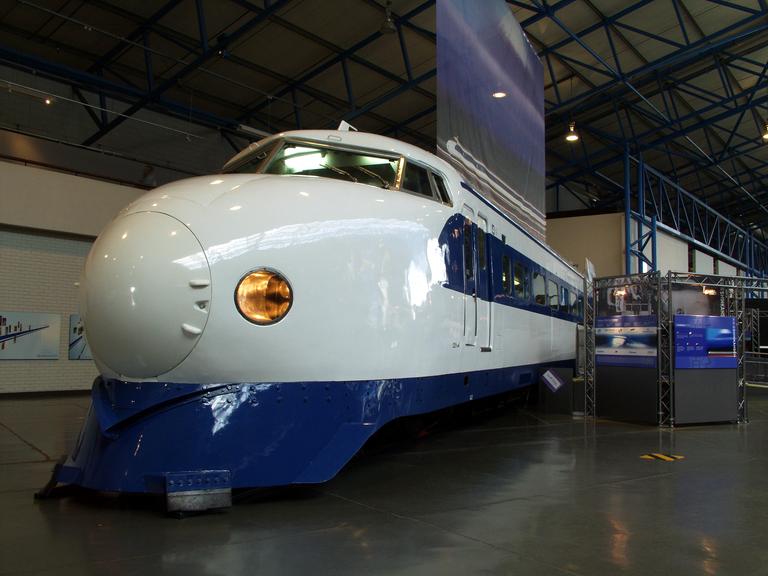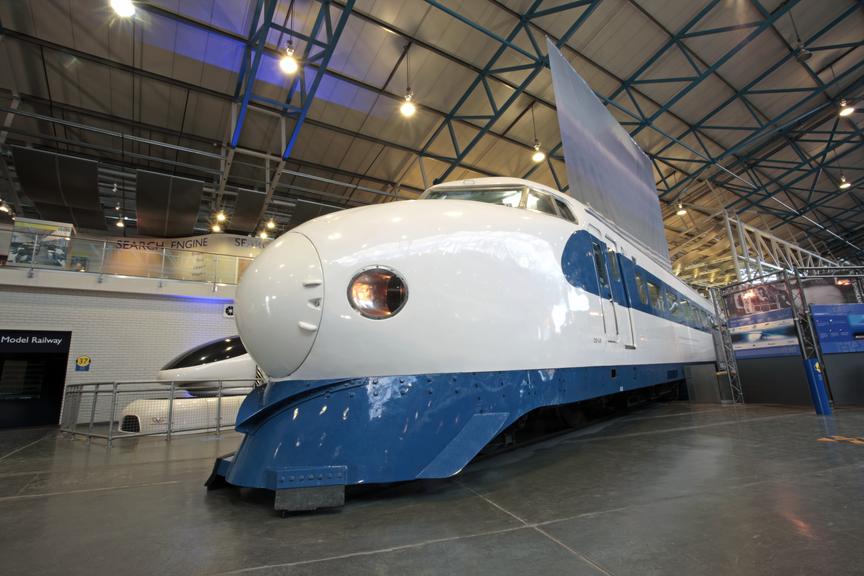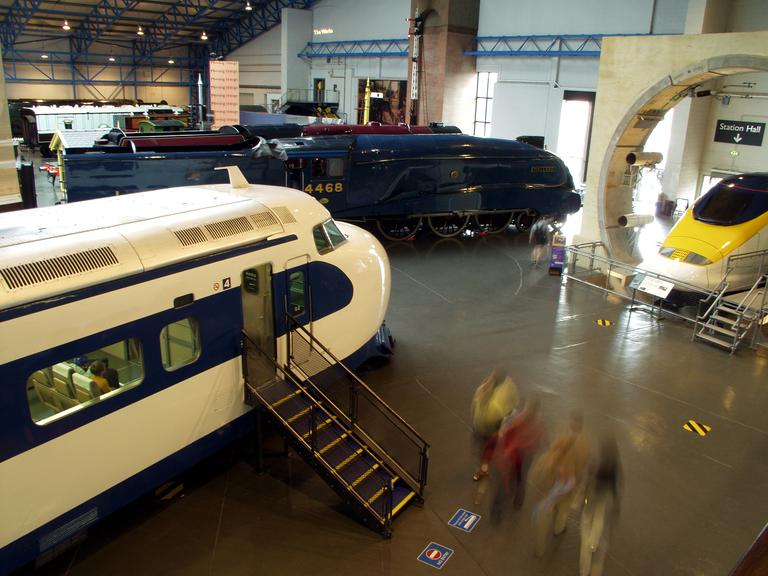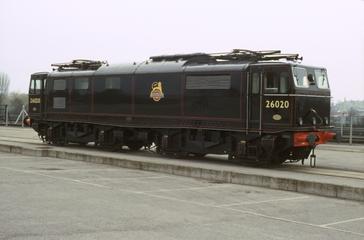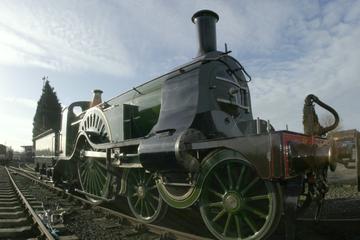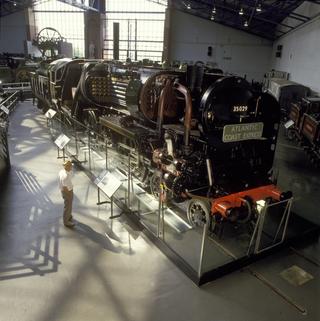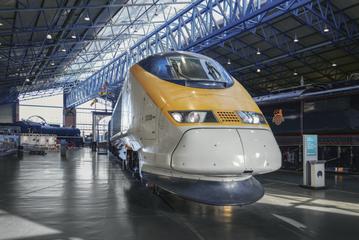Power car, Shinkansen Leading Car 22-141, 'bullet train', built by West Japan Railways, 1976, withdrawn from service in October 2000. Length 82'; width 11' 8"; height 14' 6 1/2".
The Shinkansen power car 22.141 is the last to be withdrawn of the first series of cars in service. It is the first rail vehicle built and operated outside of Britain to enter the National Collection, telling the story of a railway which shaped the future for railways around the world.
With the 1964 launch of the Shinkansen - which translates as new main line - Japan reinvented passenger railways. This was the first route dedicated to moving large numbers of people in comfort and at high speed.
It ran at speeds of up to 130mph and took little over three hours to travel the 320 mile line between Tokyo and Osaka. When new the 22-141 power car travelled this route as part of a sixteen car formation. From 1997 until its withdrawal 22.141 travelled between Hiroshima and Hakata as part of a four car formation. The service was efficient and reliable, on average bullet trains arrive within twenty-four seconds of their scheduled time.
Unlike previous Japanese trains, the Tōkaidō Shinkansen and all subsequent Shinkansen lines have been standard gauge.
After it was withdrawn from service in 2000, the Shinkansen was generously donated to the National Collection by JR West. Before arriving in the UK, it was fully restored to its present condition by over one hundred JR West workers.
The Shinkansen in the National Collection is the only bullet train outside of Japan.








